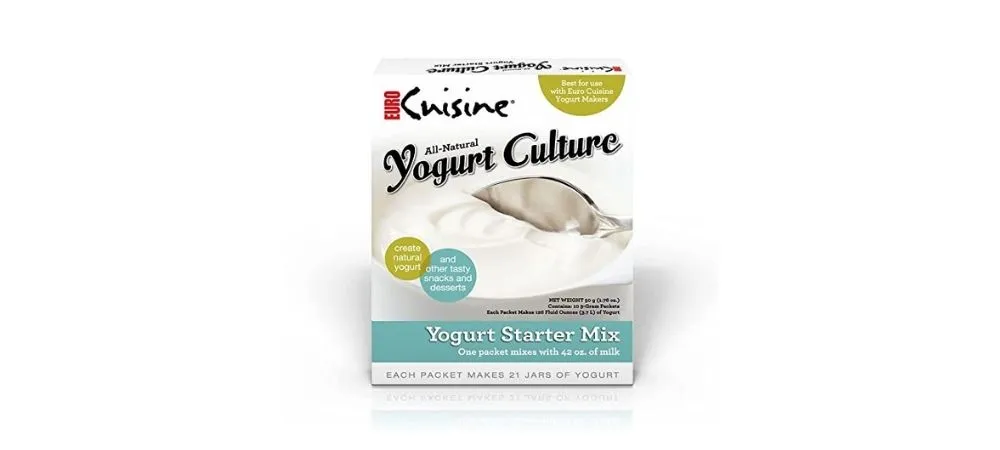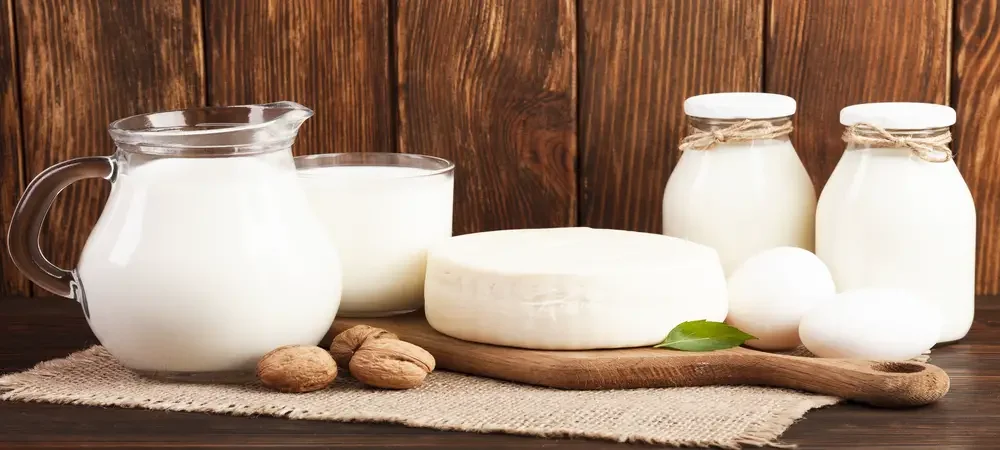Yogurt is a dairy product made by milk fermentation. When it comes to any kind of yogurt – Regular, Greek or Turkish, the baseline is the same. They all are made by fermenting the milk with probiotic cultures. The difference lies in the process of making these yogurts. Cultures of specific bacteria are used to make yogurt; these cultures form a “yogurt matrix” in which the bacteria is suspended and can survive for many years. Some lactobacilli strains have been shown to improve the bioavailability of dietary minerals, especially calcium and magnesium.
Now Coming back to the question What is the difference between Greek Yogurt and Turkish Yogurt? The main difference lies in their consistency. Yes, Turkish yogurt is lighter and less thick than Greek Yogurt. Let’s find out more in this blog post, about what Turkish yogurt is and what characteristics made it popular across the world.
- Related Posts
- Grass-feed Whole Milk Yogurt Vs Coconut yogurt – Nutritional Facts!
- Yogurt Vs Milk – what should i choose?
- Sour Cream Vs Yogurt – Can i substitute yogurt for sour cream?
- Kefir Vs Yogurt – What makes them different?
- Regular Yogurt Vs Greek Yogurt – Which one should I buy?
- Frozen Yogurt Vs Ice-cream – Which is better
- Yogurt Vs Curd – Which is better?
What is a Turkish Yogurt?
Turkish yogurt typically comes from Turkey and is hence referred to as the yogurts that are made Turkish style. It is often prepared without any starter or freeze-dried lactic acid bacteria, which produce the necessary enzymes. It is trendy in the Balkans and the Middle East. The process of making Turkish yogurt results in higher moisture content than Greek yogurt.
| Interesting Fact: Hamdi Ulukaya is an American Turkish businessman and the founder of Chobani Brand Yogurt, who marketed the Greek Yogurt aggressively. |
Do you know that Turkish-style yogurt is widely eaten yogurt across the world? It is quite similar to Balkan-style yogurt. Turkish yogurt is essentially served with every meal and forms the base of sauces and soups. It is often added as a topping to wraps, meats, and vegetables. It is also used as a salad dressing and widely eaten along with cucumber.
The popular drink Ayran (Middle Eastern Yogurt Drink) is made by whisking Turkish yogurt with water. Turkish yogurt is primarily made from cow’s milk which is cultured with live and active bacteria such as acidophilus or bifidobacteria. In most cases, the previous batch of Turkish yogurt is used to culture the fresh cow milk.
I found Merve Plain Turkish Yogurt on Amazon which is worth trying.
What is a Greek Yogurt?
Greek yogurt is known as “strained yogurt” in some North American countries, while it’s called “Greek-style yogurt” or simply just “yogurt”. It is often strained to remove water and thicken its consistency which results in a creamier product. The milk fat percentage can be increased up to 0.5% fat by adding cream before the heat treatment.
The heat treatment, in this case, is necessary for sterilization and to make the milk thick enough to be strained. Greek yogurt may also be made without any additional cream or milk, yielding a higher protein content. Turkish yogurt’s thickness comes from the way it’s made; like many other yogurts, Turkish yogurt is made by heating and adding a bacterial starter culture then allowing it to ferment.
Greek Yogurt vs. Turkish Yogurt
The production method for Greek and Turkish yogurts is nearly the same. Still, the difference lies in what Greece and Turkey call them – these names reflect unique national preferences originating from their own distinct cultures.
Treatment
Greek yogurt is known as “strained yogurt” in some North American countries, while it’s called “Greek-style yogurt” or simply just “yogurt”. It is often strained to remove water and thicken its consistency which results in a creamier product. The milk fat percentage can be increased up to 0.5% fat by adding cream before the heat treatment.
The heat treatment, in this case, is necessary for sterilization and to make the milk thick enough to be strained. Greek yogurt may also be made without any additional cream or milk, yielding a higher protein content.
Ingredients
Turkish yogurt’s thickness comes from the way it’s made; like many other yogurts, Turkish yogurt is made by heating and adding a bacterial starter culture then allowing it to ferment. The strains of bacteria used to produce traditional Western yogurts are different from the bacteria commonly found in Turkey.
Most commercial brands use thickeners such as pectin, starch, or gelatin; some thickening agents heat-process the yogurt after the bacteria is added.
Greek yogurt is usually made with cow’s or sheep’s milk, while Turkish yogurt is typically made from buffalo and cow’s milk. The fat content in Greek yogurt can be higher than 10%; it contains several times more lactose than regular yogurts since some of it is transformed into lactic acid and sugars during the fermentation process.
Consistency
Greek yogurt has more water than Turkish yogurt and a tangier flavor; some producers add gelatin or pectin for thickening, some add powdered milk, while others do not. Most Greek yogurts are strained twice to remove whole milk solids and thicken the yogurt.
Components
Greek yogurt often includes various flavors and is strained more than Turkish yogurt, so it is thicker and creamier inconsistency. The most significant differences between Greek and Turkish yogurts are that they are strained more, allowing them to be higher in protein and lower in carbohydrates, cholesterol, and lactose; the texture is thick, rich, and creamy. Turkish yogurt is strained to a lesser degree to contain more lactose, carbohydrates, and calcium. The consistency of Turkish yogurt is thinner, similar to the texture of regular yogurt.
Greek yogurt that has been strained several times is called “straggisto”, meaning “thickest” or “strongest” in Greek.
Is Greek yogurt Turkish?
No, it is not Turkish yogurt, even though they sound similar. They are different from one another in terms of their texture and consistency. A significant difference between the two types of yogurt is that Greek yogurt has been strained more than Turkish yogurt, which makes it thicker and creamier inconsistency. The most significant differences between Greek and Turkish yogurts are that Greek yogurts are strained more, allowing them to be higher in protein and lower in carbohydrates, cholesterol, and lactose; the texture is thick, rich, and creamy. Turkish yogurt is strained to a lesser degree to contain more lactose, carbohydrates, and calcium.
Is Turkish yoghurt healthy?
Turkish yogurt is a good source of calcium, protein, and phosphorus. It’s also deficient in fat, which makes it an excellent choice for people watching their weight. It can be used as a substitute for sour cream or mayonnaise on sandwiches, but keep in mind that it has more calories than Greek yogurt because it contains milk and whey.
Turkish yogurt is less sour than Greek due to the difference in bacteria used. But it can be easily made less sour by putting it in a bowl with some sugar (one tablespoon per cup of Turkish yogurt) and letting it sit for 20-30 minutes at room temperature. It will make Turkish yogurt taste like Greek yogurt.
Is Turkish Yogurt sweet?
Turkish yogurt is eaten with different kinds of food. In many countries, it’s used as a substitute for sour cream or mayonnaise on sandwiches, but the taste of Turkish yogurt differs from one country to another. It can be sweet due to added sugar, used in desserts, and sometimes combined with fruit puree for a healthy snack.
Frequently Asked Question
Is Turkish Yogurt Good For You?
Yes! Turkish Yogurt is much lower in calories as compared to sour cream or mayonnaise. But the creamy flavor is at par with them. Add some spices and herbs to Turkish yogurt and you are good to go.
Does Turkish Yogurt Have Protein?
Each serving of Turkish Yogurt contains 3.1g of protein, 120 calories, and 3.7g of total carbs.
Is Chobani Yogurt – Greek or Turkish?
Chobani yogurt is famous for its Greek yogurt. Although, the founder Mr Ulukaya is an American-Turkish businessman. Even the company named Chobani is a variation of the Turkish word ‘Choban’.
Conclusion
The differences between Greek and Turkish yogurt are primarily based on the different ways they are made, with the final product being more or less thick depending on how much it has been strained. The most significant difference is that two entirely different types of bacteria are used to make the yogurts, which means they each have unique health benefits. Turkish yogurt is usually thicker, sweeter, and richer in protein than Greek yogurt because it has been strained. However, both are better for you than regular yogurt because they are made from milk that has been heat-treated to remove harmful bacteria.









